
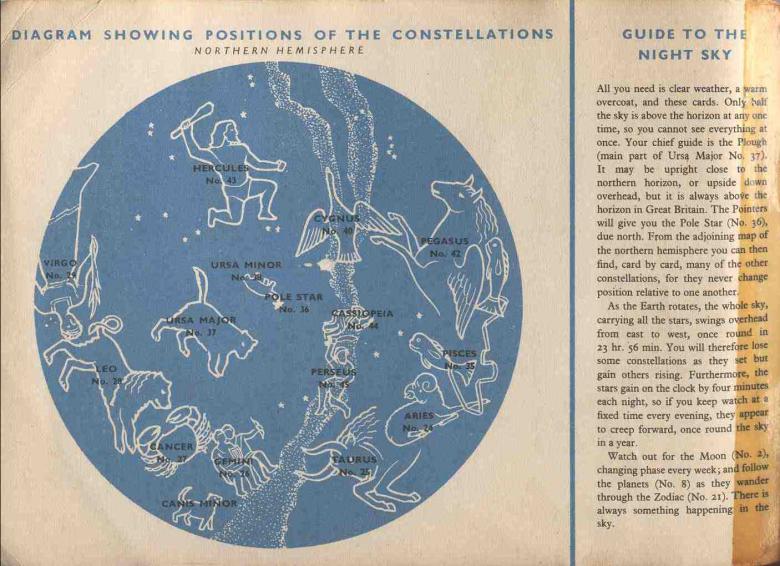
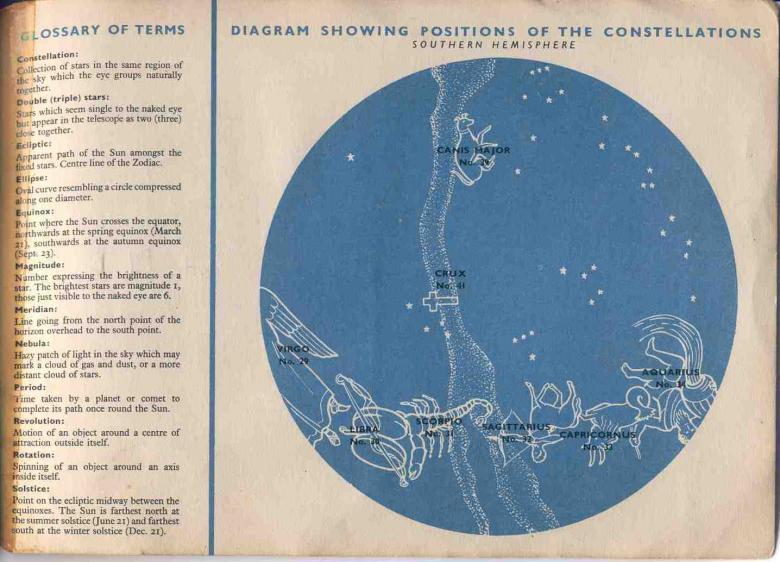

The front and back inside covers held together with 50 year old sellotape! Not exactly
Norton's Star Atlas or Uranometria 2000, but good enough for me back in those days. I
added the cards were also available in packets of PG Tips on the back cover! This was
long before tea bags were readily available.
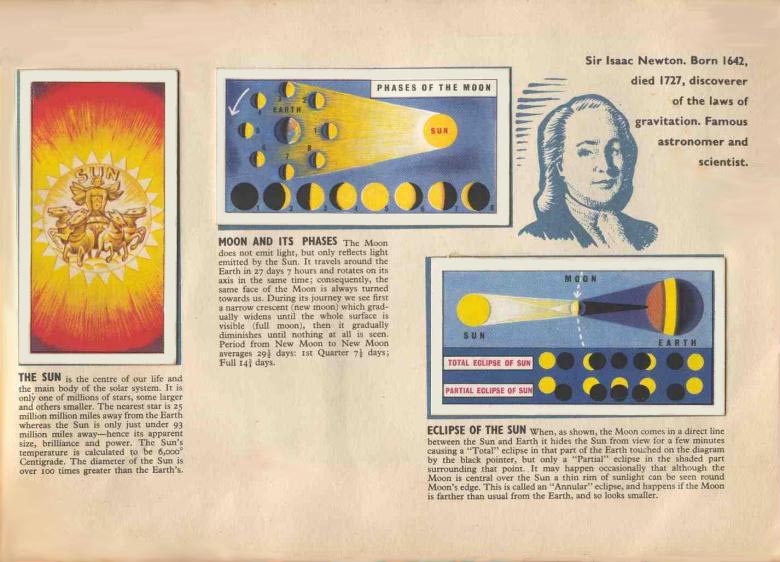
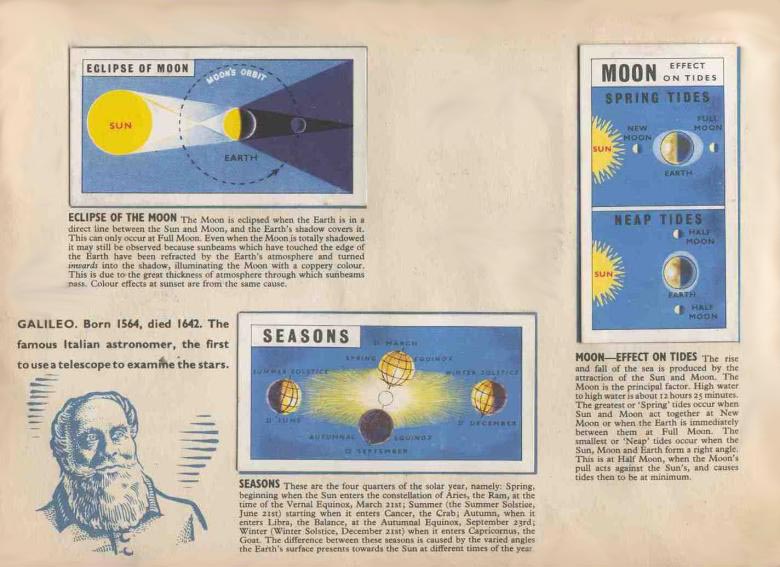
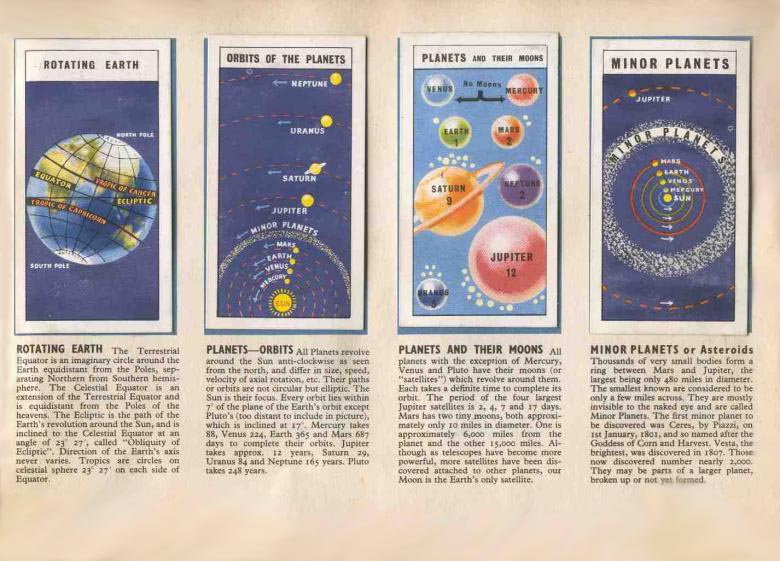
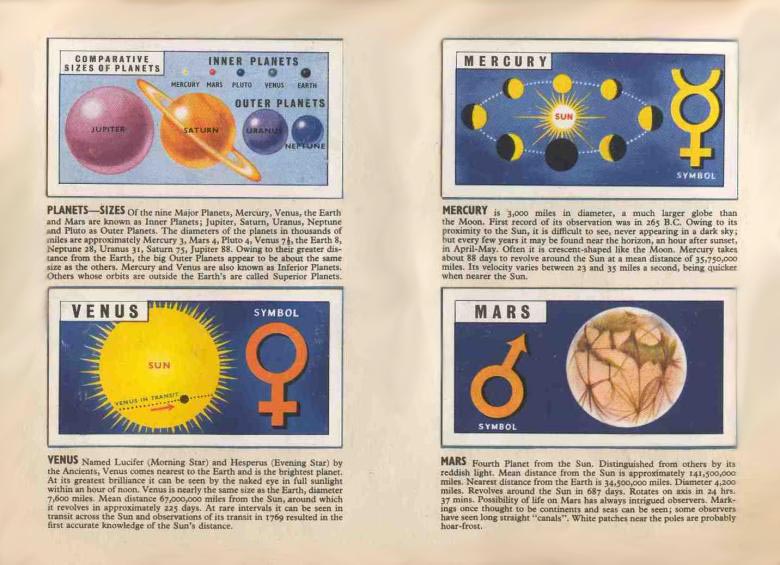
The card for Mars is fanciful thinking. The existence of canals on Mars has long since been
disproved. Notice also the astrological symbols for the planets on the cards which is rather quaint.
Can you spot the error on the PLANETS - SIZES card? Pluto is shown as an inner planet which it
isn't. However, its described as an outer planet in the text which is correct.
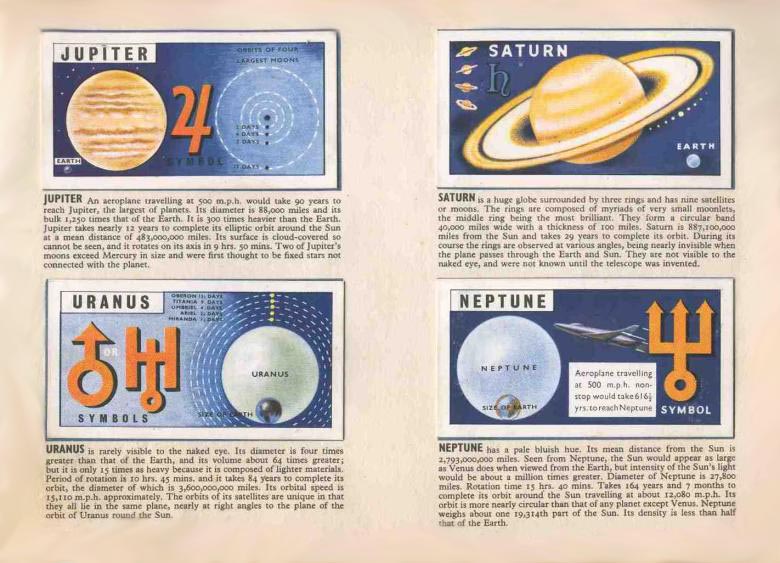
Since the Voyager missions through the solar system in the 1970's and 80's and the Galileo
and Cassini missions to Jupiter and Saturn in recent years, our knowledge of these planets has
greatly expanded. At the time when these cards were printed, Jupiter, Saturn and Uranus had 12,
9 and 5 moons respectively. The number of moons orbiting these planets has increased considerably
plus faint rings have since been discovered around Jupiter and Uranus.
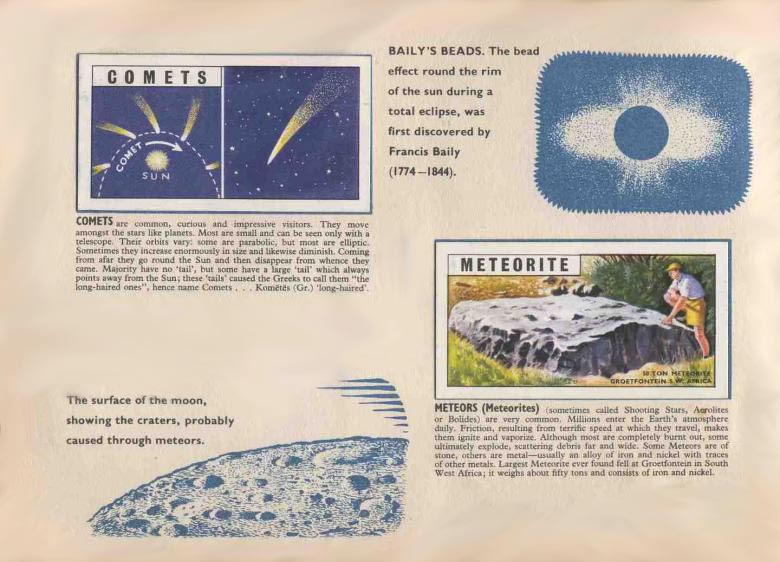
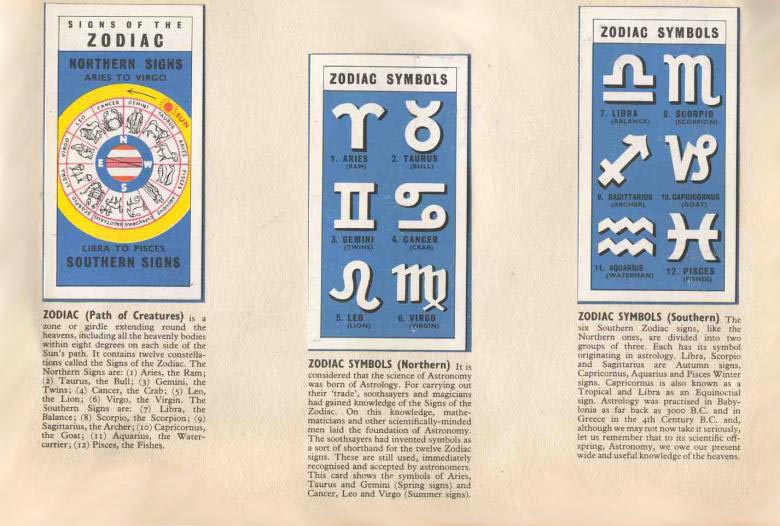
The person that compiled this set of cards was probably more into ASTROLOGY than astronomy
looking at the cards above! The cards that follow are of the constellations and although a card
is dedicated to each of the zodiacal constellations and a few others, I'm surprised they managed
to omit ORION. One of the brightest and most prominent constellations in the winter sky.
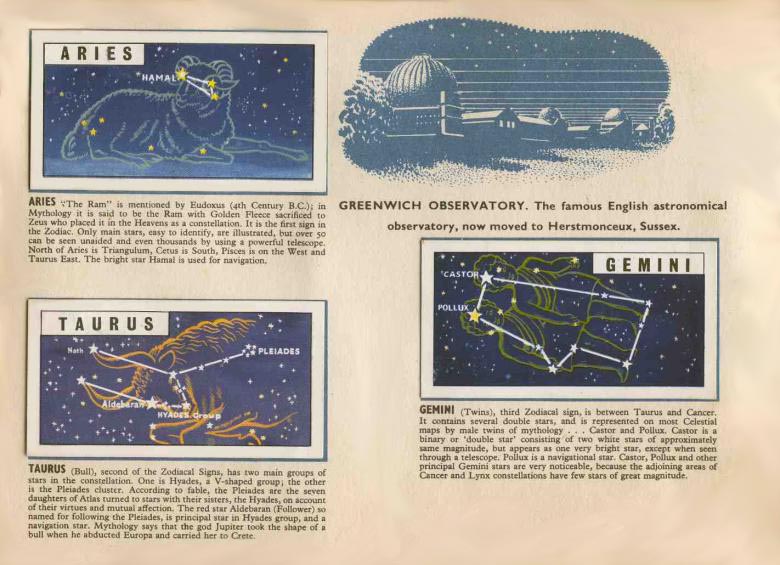
The page above mentions the Greenwich Observatory having moved to Herstmonceux in Sussex and it
was through this album when I first became aware of the establishment and my desire as a lad in the
1950's to work there one day. However, the drawing must have been left to artistic license as it
doesn't look anything like that!
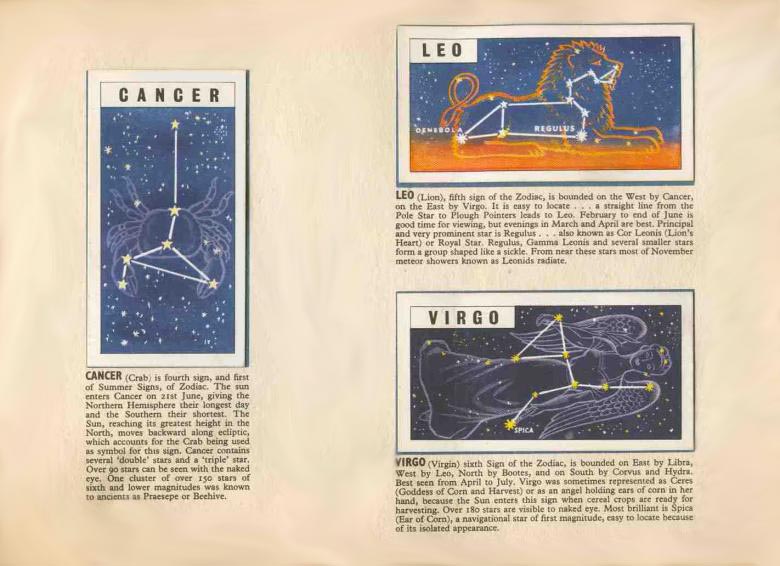
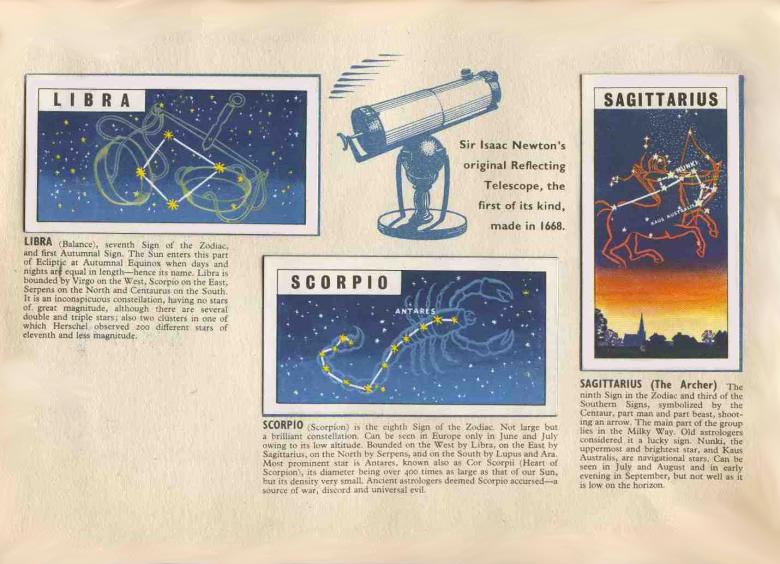
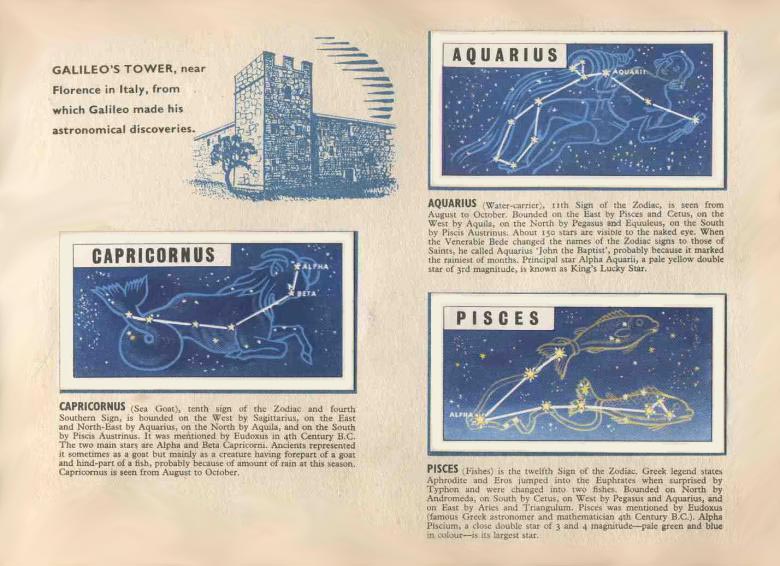
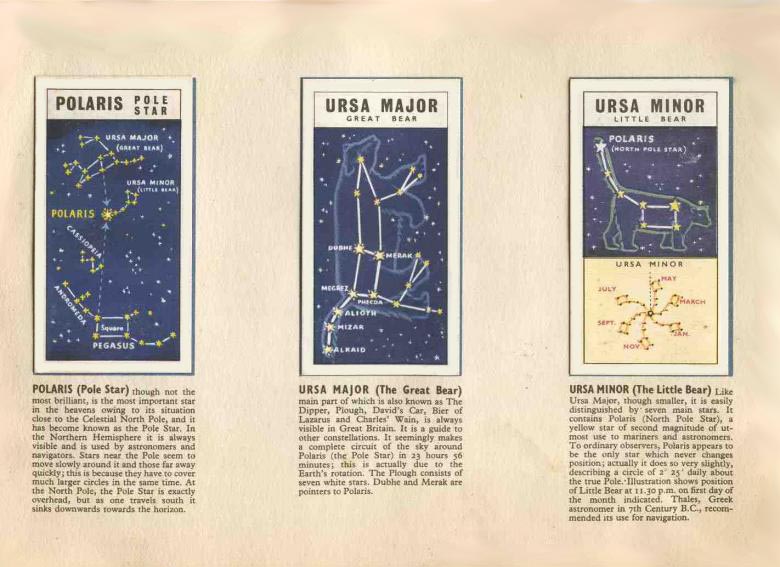
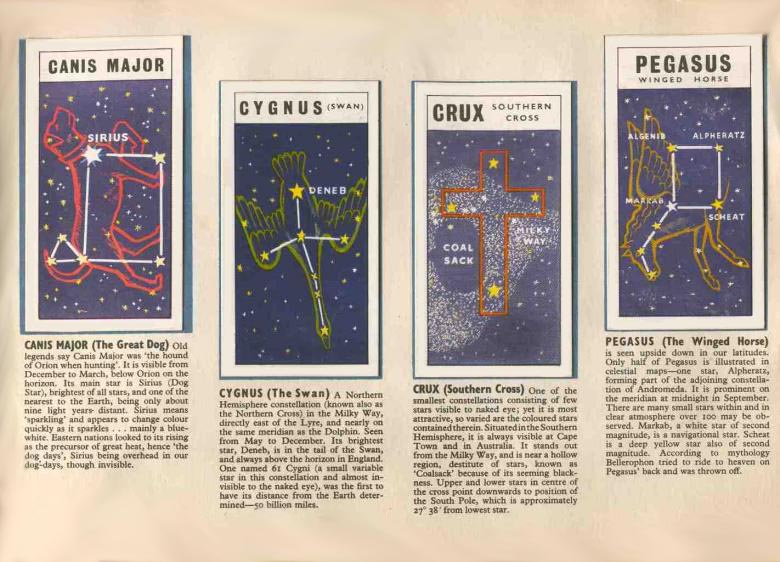
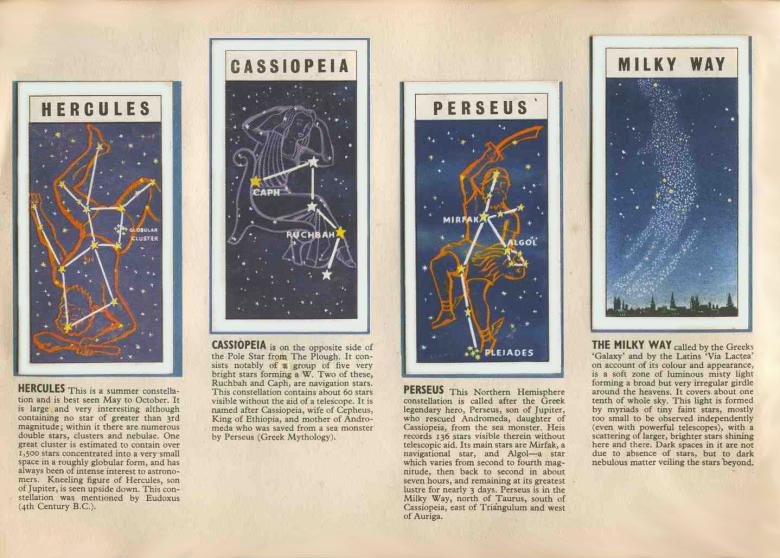
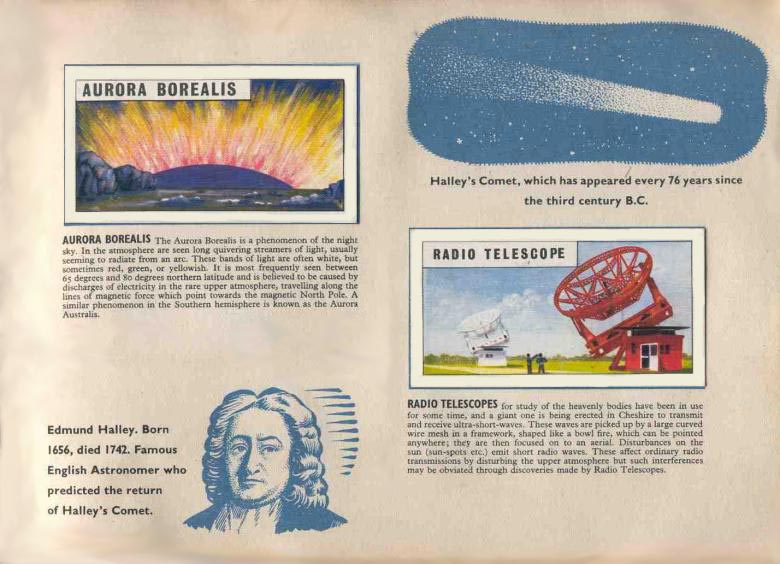
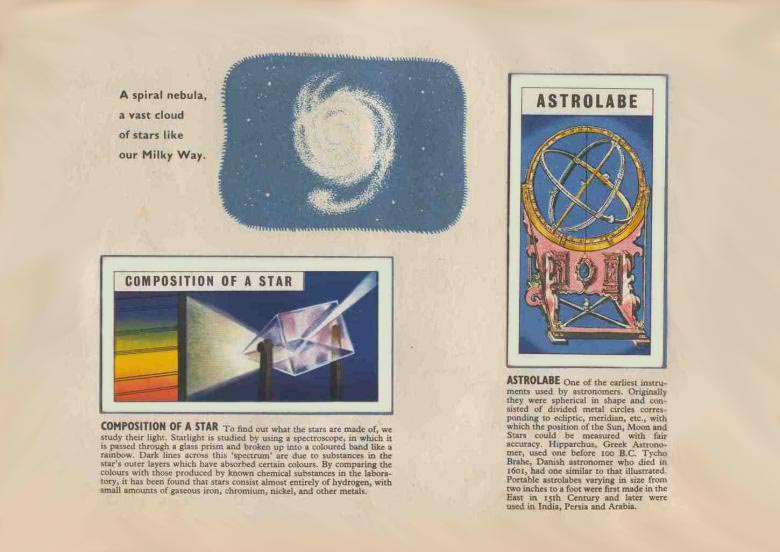
The last two pages are interesting? They show a radio telescope, but NOT an optical one! I would
have thought that would have been more appropriate than a picture of a museum piece like an astrolabe.
The other notable thing is that a GALAXY was still referred to as a spiral nebula. By the 1950's I
would have thought they would have known the difference?

